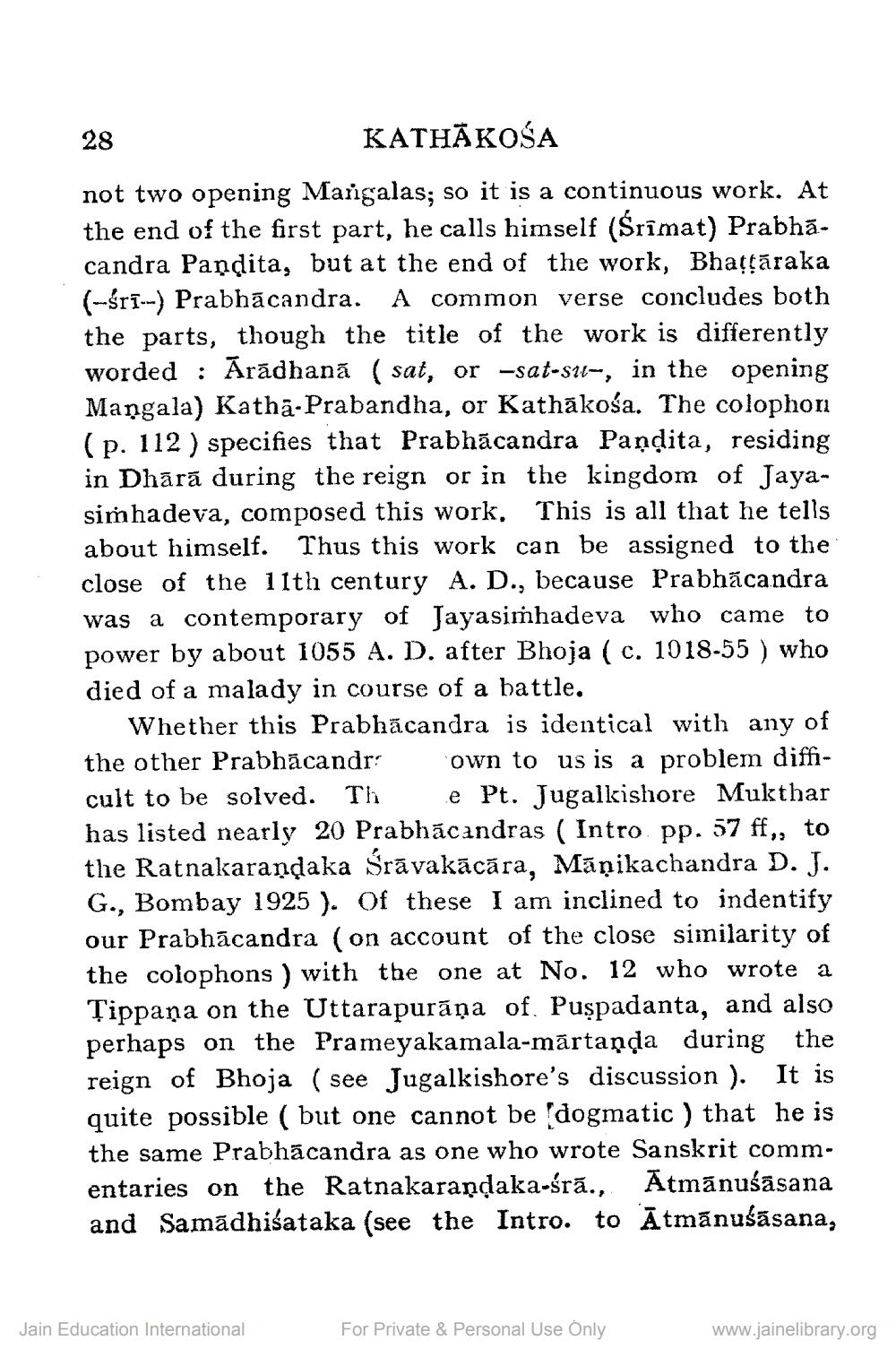________________
28
KATHĀKOŠA not two opening Margalas; so it is a continuous work. At the end of the first part, he calls himself (Śrímat) Prabhācandra Pandita, but at the end of the work, Bhattāraka (-śr1--) Prabhācandra. A common verse concludes both the parts, though the title of the work is differently worded : Ārādhana ( sat, or -sat-sıt“, in the opening Mangala) Katha-Prabandha, or Kathākośa. The colophon (p. 112 ) specifies that Prabhācandra Pandita, residing in Dhārā during the reign or in the kingdom of Jayasimhadeva, composed this work. This is all that he tells about himself. Thus this work can be assigned to the close of the 11th century A. D., because Prabhácandra was a contemporary of Jayasimhadeva who came to power by about 1055 A. D. after Bhoja ( c. 1018-55 ) who died of a malady in course of a battle.
Whether this Prabhācandra is identical with any of the other Prabhācandr own to us is a problem difficult to be solved. Th e Pt. Jugalkishore Mukthar has listed nearly 20 Prabhácandras ( Intro pp. 57 ff,, to the Ratnakarandaka Srāvakācāra, Māņikachandra D. J. G., Bombay 1925 ). Of these I am inclined to indentify our Prabhācandra (on account of the close similarity of the colophons ) with the one at No. 12 who wrote a
Țippana on the Uttarapurāņa of. Puspadanta, and also perhaps on the Prameyakamala-mārtanda during the reign of Bhoja ( see Jugalkishore's discussion ). It is quite possible ( but one cannot be 'dogmatic ) that he is the same Prabhācandra as one who wrote Sanskrit commentaries on the Ratnakarandaka-śrā., Ātmānušāsana and Samadhiếataka (see the Intro. to Ātmānušāsana,
Jain Education International
For Private & Personal Use Only
www.jainelibrary.org




